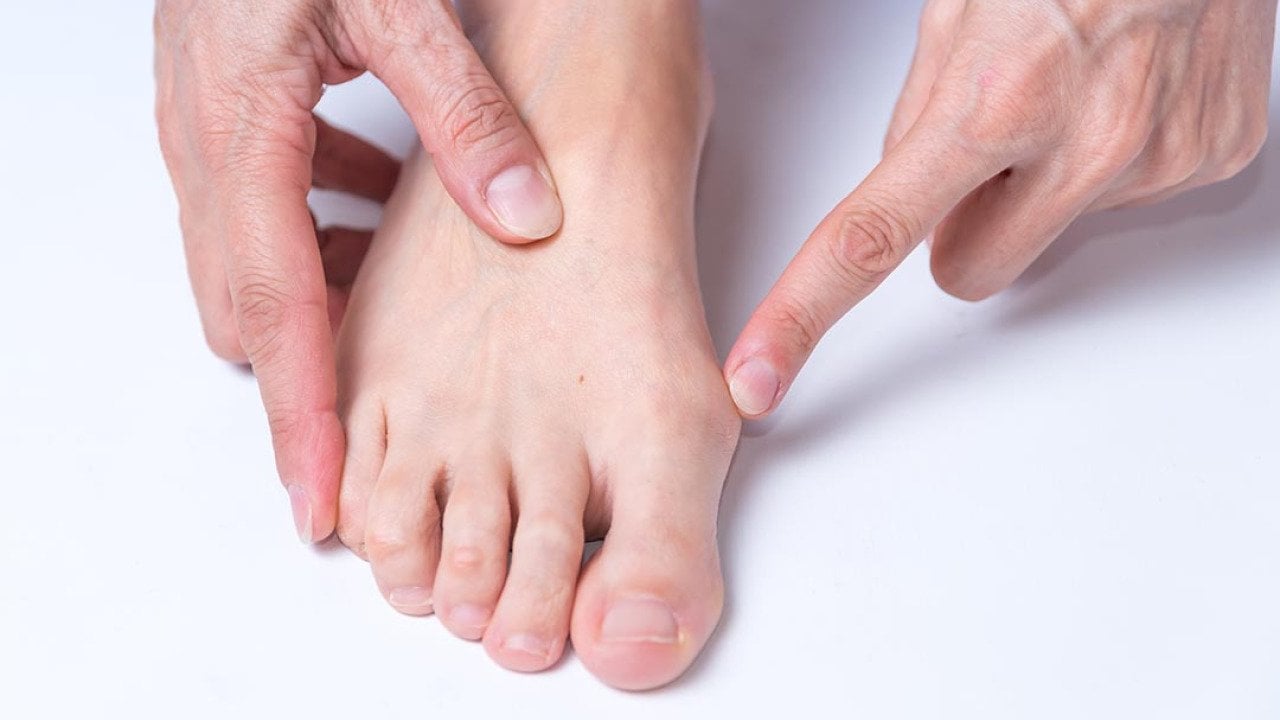Bunions, often described as painful and unsightly bumps at the base of the big toe, affect approximately one in three individuals over the age of 65. The condition, which derives its name from the Greek word for turnip, can severely impact mobility and overall quality of life. According to Northwell Health, it is crucial to address bunions early to prevent further complications, including arthritis and other painful conditions.
Understanding the causes and treatment options for bunions can greatly improve one’s ability to manage this condition effectively. Here are six essential facts that foot specialists want you to know.
What Causes Bunions?
Bunions develop due to a misalignment of bones, tendons, and ligaments in the foot, particularly at the metatarsophalangeal (MTP) joint where the big toe meets the foot. Over time, excessive pressure on this joint can lead to the big toe shifting towards the other toes, creating a prominent bump. This same process can occur on the pinkie toe, resulting in a condition known as a bunionette or tailor’s bunion.
Genetics plays a significant role in bunion formation; an estimated 70% of people with bunions have a family history of the condition. Additionally, inappropriate footwear, especially shoes with narrow toe boxes or high heels, can exacerbate bunion development by forcing the toes together.
Recognizing the Symptoms
Individuals with bunions typically experience swelling and discomfort, which can be so severe that it becomes challenging to stand or walk. The friction caused by shoes rubbing against the bunion can lead to increased pain and stiffness, making everyday activities difficult.
Non-Surgical Treatment Options
Fortunately, many bunions can be managed without surgery. If symptoms are mild, a combination of home remedies and lifestyle adjustments may alleviate discomfort. Here are some effective strategies:
– Opt for shoes with a wide toe box or open toe design.
– Use toe spacers to prevent crowding.
– Apply bunion pads or cushions to minimize pressure.
– Consider orthotic devices like arch supports or shoe inserts.
– Wear a bunion splint at night to help realign the toe.
– Take over-the-counter anti-inflammatory medications for pain relief.
Consulting a healthcare provider is advisable for personalized recommendations, especially if home treatments do not provide sufficient relief.
When Is Surgery Necessary?
If non-surgical methods fail to alleviate pain and significantly impact daily life, surgical intervention may be necessary. A bunionectomy is the definitive procedure for correcting bunions, repositioning the toe joint by realigning the bones, ligaments, and tendons.
Dr. Adam Bitterman, an orthopedic surgeon at Northwell Health, emphasizes the importance of considering surgery only when foot pain disrupts one’s quality of life. The procedure is not merely cosmetic; its primary aim is to relieve pain and restore mobility.
Corrective surgery often involves the insertion of pins and screws to realign the joint, and may require reshaping bones or fusing joints. The surgery is typically quick, lasting between 30 minutes to an hour, with most patients returning home the same day.
Minimally Invasive Approaches
In many cases, surgeons prefer minimally invasive techniques for bunionectomies, utilizing small instruments and tiny incisions. This approach generally results in less pain and a faster recovery time compared to traditional surgery.
Recovery and Long-Term Outlook
Recovery from bunion surgery can vary based on the individual and the specific surgical approach. Some patients may begin partial weight-bearing exercises within two weeks and return to regular footwear within six weeks. However, a complete recovery can take up to four to six months.
It is important to note that bunions can recur if the surgery does not adequately realign the bones or if post-operative care instructions are not followed. Additionally, new bunions can develop on the opposite foot. Seeking treatment from a qualified foot specialist is crucial for achieving the best outcome.
By understanding bunions and their treatment options, individuals can take proactive steps toward managing this condition effectively.







































































